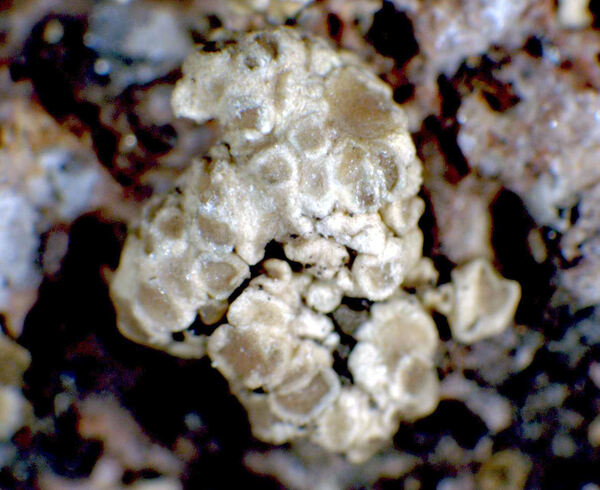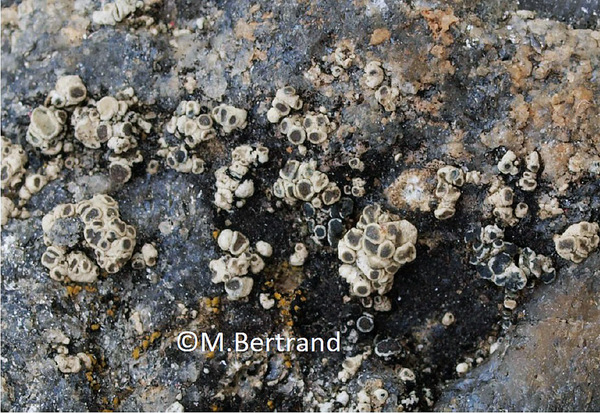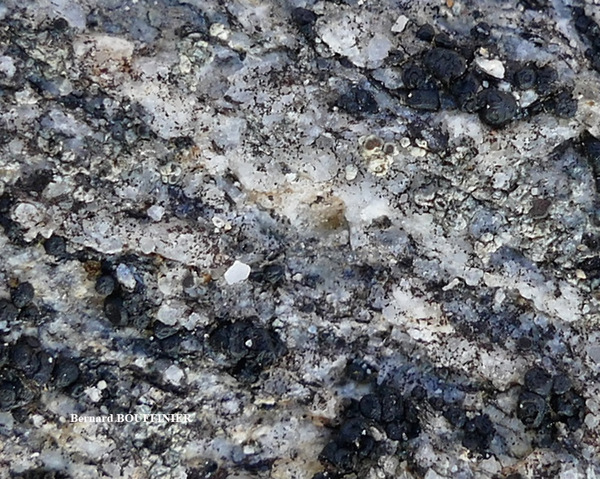Polyozosia oyensis (M. Bertrand & Cl. Roux) S.Y. Kondr., Lőkös & Farkas
in Kondratyuk & al., Acta Bot. Hung., 62, 1-2: 102, 2020. Basionym: Lecanora oyensis M. Bertrand & Cl. Roux - Bull. Inf. Ass. Franç. Lich., 36: 108, 2011.
Synonyms: Lecanora contractula auct. medit.; Myriolecis oyensis (M. Bertrand & Cl. Roux) M. Bertrand & Cl. Roux
Distribution: C - Tosc, Sar.
Description: Thallus crustose, episubstratic, whitish, consisting of convex, 0,5-3 mm wide, more or less dispersed areoles with an uneven surface. Cortex 25-40 μm thick, filled with large crystals soluble in K, insoluble in N, visible under polarized light, and with smaller crystals insoluble in K and in N, overlain by an epinecral layer; medulla white, also filled by larger and smaller crystals. Apothecia lecanorine, 0.25-1 mm across, numerous and often crowded, round to irregular in outline by mutual compression, at first immersed, but soon subsessile, with a concave to flat, pale to dark brown (often with a greenish blue tinge), epruinose disc, and a thick thalline margin. Thalline exciple corticate, of more or less anticlinally oriented hyphae, filled with large crystals soluble in K, insoluble in N (polarized light), reacting KC+ orange, plus smaller crystals insoluble both in K and in N; proper exciple prosoplectenchymatous, rich in crystals; epithecium brown, greenish brown or blue-green, rich in very small crystals insoluble both in K and in N, reacting K-, N + faintly brick-red; hymenium colourless, 50-60 μm high, the upper part inspersed with small crystals insoluble both in K and in N; paraphyses coherent in water, easily made free in K, branched and anastomosing 1.5-2 μm thick at base, the apical cells 2.5-5 μm wide; hypothecium colourless, with large, yellow-orange crystals (polarized light) soluble in K and reacting KC+ orange, plus smaller, colourless crystals of calcium oxalates, insoluble in K. Asci 8-spored, elongate-clavate, very thin-walled, with a K/I+ blue, tall tholus penetrated by a faintly amyloid apical cushion, the wall K/I-, surrounded by a K/I+ blue outer layer, Lecanora-type. Ascospores 1-celled, hyaline, ellipsoid, 7.5-13.5 x (4-)5-6.5(-7) μm. Photobiont chlorococcoid. Spot tests: cortex K- (sometimes faintly K+ yellowish), C+ pink, KC+ red, P-; medulla K-, C-, KC-, P-. Chemistry: 2.7 dichlorolichexanthone (in small quantities), gyrophoric acid, and an unknown substance. Note: a Mediterranean-Atlantic species of siliceous maritime rocks often visited by birds. For further details see Bertrand & Roux (2011). This is the lichen provisionally called Lecanora contractula by Nimis (1993: 348).
Growth form: Crustose
Substrata: rocks
Photobiont: green algae other than Trentepohlia
Reproductive strategy: mainly sexual
Taxon bound to maritime-coastal situations
Commonnes-rarity: (info)
Alpine belt: absent
Subalpine belt: absent
Oromediterranean belt: absent
Montane belt: absent
Submediterranean belt: absent
Padanian area: absent
Humid submediterranean belt: absent
Humid mediterranean belt: very rare
Dry mediterranean belt: absent
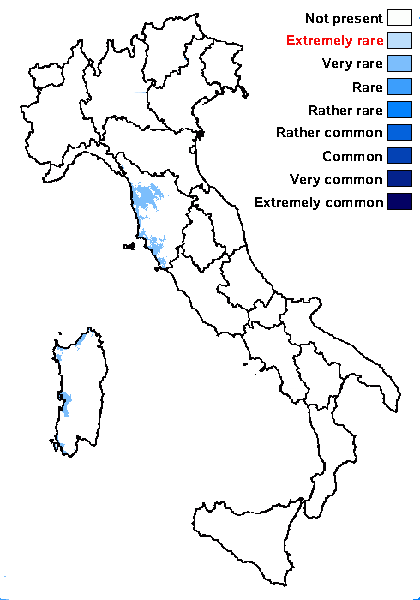
Predictive model
Herbarium samples
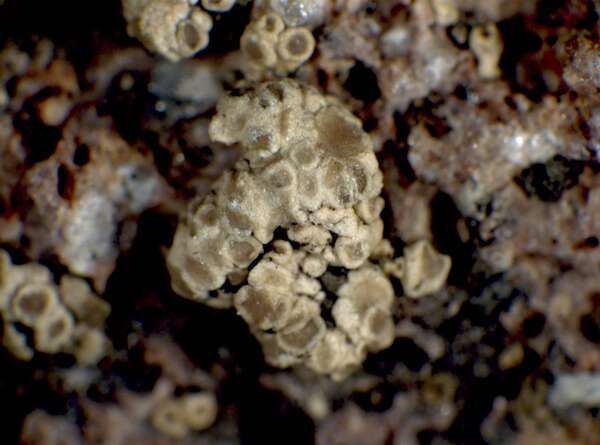

P.L. Nimis; Owner: Department of Life Sciences, University of Trieste
Herbarium: TSB (10158)
2001/11/25
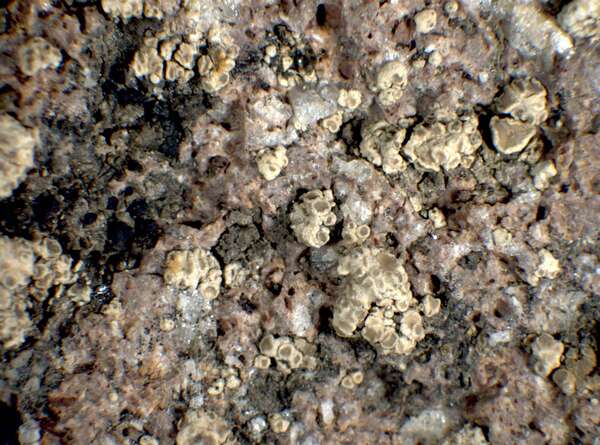

P.L. Nimis; Owner: Department of Life Sciences, University of Trieste
Herbarium: TSB (10158)
2001/11/25
Growth form: Crustose
Substrata: rocks
Photobiont: green algae other than Trentepohlia
Reproductive strategy: mainly sexual
Taxon bound to maritime-coastal situations
Commonnes-rarity: (info)
Alpine belt: absent
Subalpine belt: absent
Oromediterranean belt: absent
Montane belt: absent
Submediterranean belt: absent
Padanian area: absent
Humid submediterranean belt: absent
Humid mediterranean belt: very rare
Dry mediterranean belt: absent

Predictive model
| Herbarium samples |


P.L. Nimis; Owner: Department of Life Sciences, University of Trieste
Herbarium: TSB (10158)
2001/11/25


